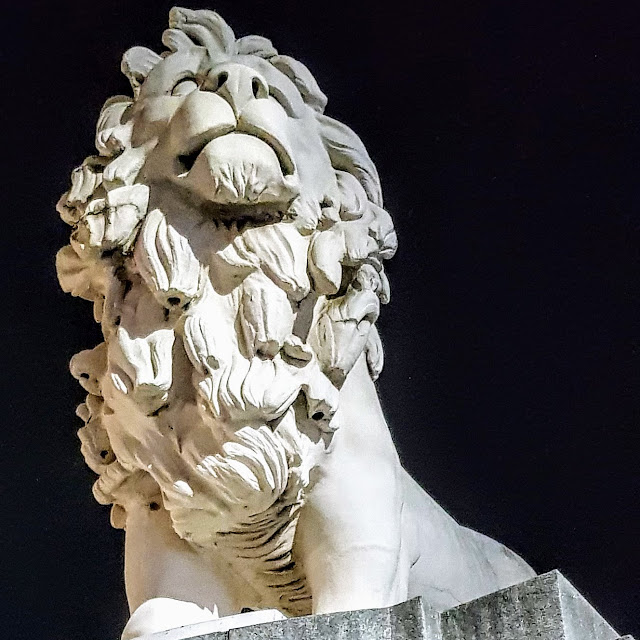 |
| Shining white against a black night. |
Crossing Westminster Bridge, heading south, you will be met with a sculpture of a White Lion, standing on a plinth beside County Hall.
The lion has been there since 1966, although, as it turns out, it is much older than it appears.
An inscription on one of the lion's paws reads... 'WFW Coade 24 May 1837'.
William Frederick Woodington was a sculptor at the Royal Academy's School of Sculpture and used Coade Stone, a ceramic material, to sculpt the lion in 1837.
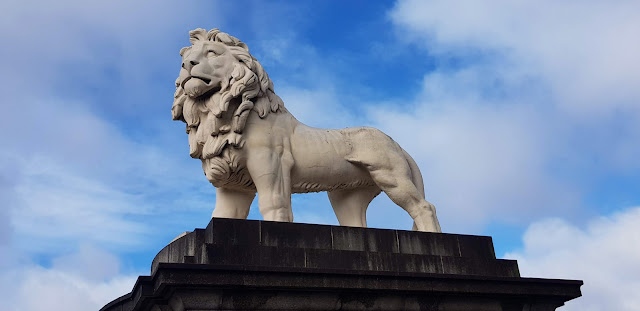 |
| A wonderful profile of the lion. |
The lion sculpture once adorned the top of the Lion Brewery, which stood roughly where the Royal Festival Hall now stands today.
The Brewery was severely damaged by a fire, in 1931, and was derelict until its demolition in 1949. However, the lion was saved in accordance with the wishes of HM King George VI.
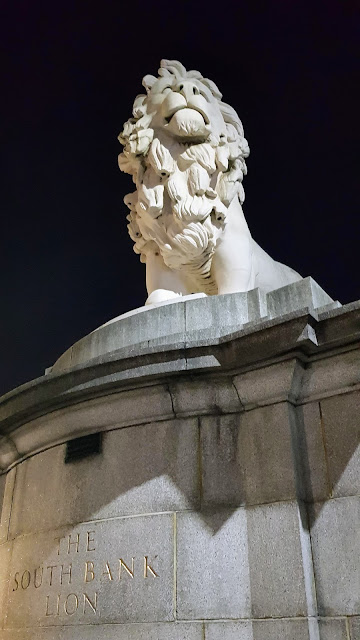 |
| The South Bank Lion at night. |
But, in 1966, plans for a new office block would see him moved to his current location, by the Greater London Council.
The South Bank Lion was originally a triplet. One lion has since been lost, while the other was given to the Rugby Football Union, in 1971, and stands outside the Rowland Hill Gate, Twickenham. The lion, at Twickenham stadium, was covered in gold leaf, in 1991, when England hosted the Rugby World Cup.
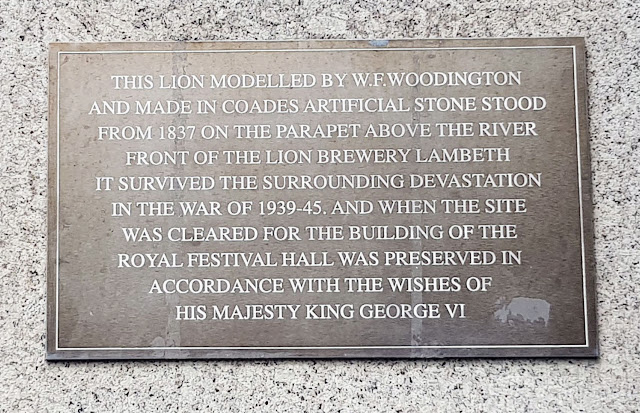 |
| South Bank Lion plaque. The South Bank Lion is 13 feet long, 12 feet high and weighs 13 tonnes. |
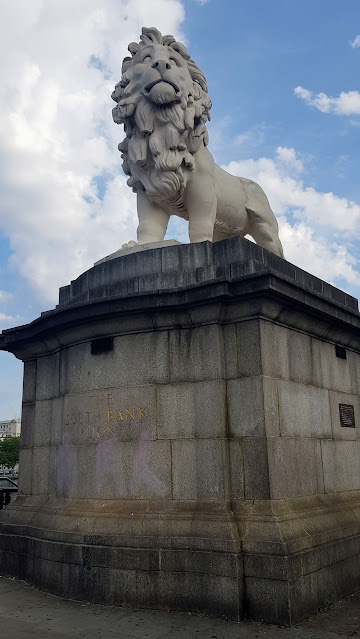
Interesting. I've read something recently about coade stone.
ReplyDeleteI had never heard of Coade stone and was also surprised at how old the lion is.
Delete